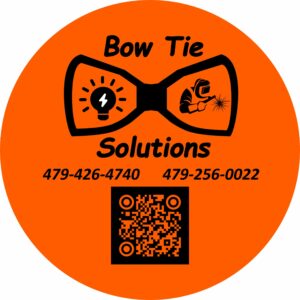The standard NEC conduit packing chart is based on Chapter 9, Table 1, and Appendix C of the National Electrical Code (NEC). It shows the maximum number of conductors allowed in different channel types at the 40% fill limit (the standard for more than two conductors).
The conduit fill diagram shows the maximum number of wires you can safely run through various types and sizes of electrical conduit while maintaining compliance with the National Electrical Code (NEC).
It depends on two basic things:
the Outer diameter of conductor (wire size + insulation type)
the Inner diameter of the channel (EMT, IMC, or RMC)
This chart focuses specifically on THHN/THWN copper conductors, the most commonly used wires in commercial and residential applications, and assumes the standard 40% packing limit for three or more conductors in accordance with NEC Chapter 9, Table 1.
Duct fill is an important number to consider because overfilling the duct can:
Make pulling wires difficult or impossible
It causes overheating due to lack of air flow
Code violation and inspection failure
Understand channel fill percentages
The NEC sets strict rules about how much space conductors can occupy within a conduit. These rules are summarized in Chapter 9, Table 1, and are based on the number of conductors:
These limits are based on the cross-sectional area of the wires and ensure that there is sufficient space for heat dissipation and for the wires to be installed or replaced without damage.
How to use this chart
Find the channel type (EMT, IMC, or GALV = RMC)
Find your trade size (for example, ¾”, 1″, 2″)
Choose your conductor size (for example, 12 AWG, 4/0)
Read the maximum number of wires allowed in that group

Frequently asked questions (with answers)
Why do EMT, IMC and GALV have different values?
Each channel type has a different one Wall thicknesswhich affects the amount of space available inside.
EMT (Electrical Metal Conduit) It has thinner walls, so it has more packing space
IMC (Intermediate Metal Channel) It is thicker
GALV/RMC (rigid metal conduit) It is the thickest, leaving the least space for connectors
Why the 40% limit?
In accordance with NEC Chapter 9, Table 1, when running three or more conductors, the total cross-sectional area of the wiring shall not exceed 40% of the internal area of the conduit.
If you are running only one or two wires, the permissible fill percentage increases to 53% or 31% respectively.
What do AWG and kcmil mean?
These are the different measures of conductor diameter:
AWG (American Wire Gauge): Used for wire sizes up to 4 AWG
kcmil (circular kiloml): Used for larger conductors (250, 350, 500, etc.)
Both measure the diameter of the conductor, which determines how much space it takes up in the conduit.
Does the type of insulation matter?
Yes. This chart is for THHN/THWN insulation with a specified outside diameter.
If you use larger insulation types like XHHW-2, the conductor will take up more space, and your packing count will be smaller, so you’ll need a different layout (Appendix C includes those as well).
Can I run mixed wire sizes?
If you are mixing wire sizes or using more than one type of insulation, you will need to manually calculate the conduit fill using:
NEC Chapter 9, Table 5 and Table 4 (for individual wire and conduit areas)
Or use a channel fill calculator such as the Southwire tool or the Mike Holt tool.
This scheme is only intended for cases where all conductors are of the same size and insulation type.
Is this scheme based on the latest NEC?
Yes. This chart is based on 2023 NEC Appendix C. Conductor packing values for THHN/THWN copper conductors have remained unchanged since the 2017 edition.
If all connectors are not the same size, refer to NEC channel fill calculator To determine what conduit fill is allowed for your electrical project. NNC offers excellent prices for Thn Thon-2the type of electrical cable shown in this diagram.



